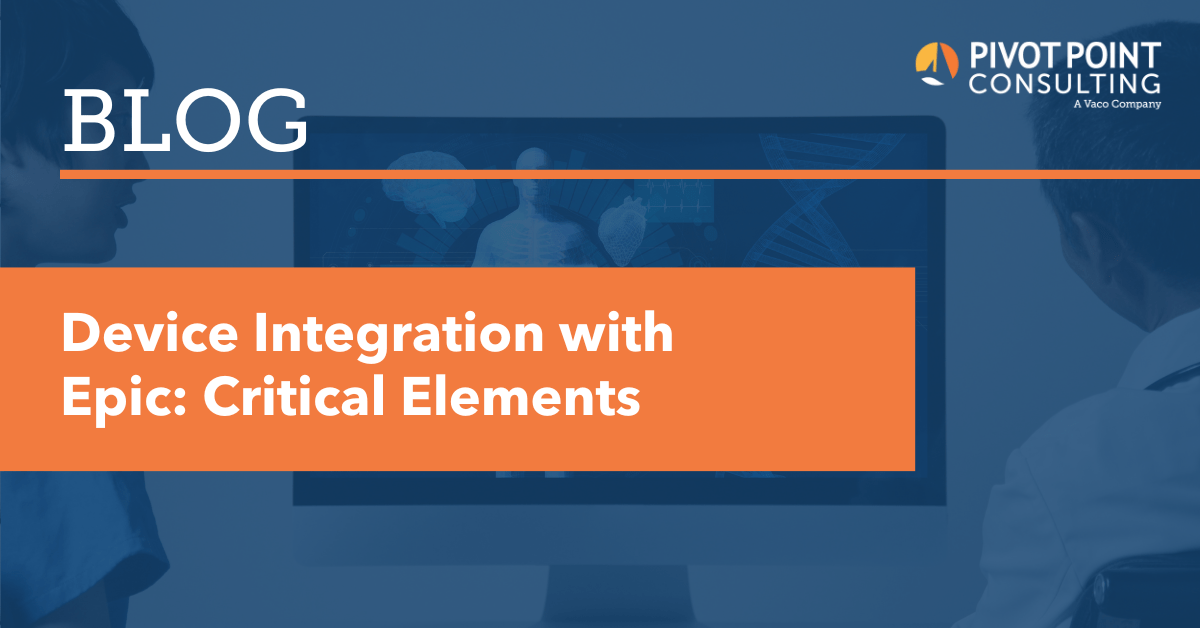As a Pivot Point consultant, my current role is project manager for Honor Health for the Device Integration Program with the organization’s Epic system. I’ve been involved with Device Integration for nine years, and it’s been one of the most rewarding challenges of my life. Vital sign data from heart monitors, ventilators, balloon pumps and more must be perfectly managed and integrated within each patient’s electronic record and across various hospitals. Lives depend on it!
In my role, I bring together clinicians, IT experts and medical device vendor representatives to achieve the same goal—precise integration and communication of device data. My personal strategy, one that Pivot Point also employs, is to break down silos, over-communicate and flawlessly organize.
Sharing information is mission critical because we’re managing the vital data and analytics on which medical decisions are made. I educate everyone and communicate everything. In consulting with our clients, there are two key areas where Pivot Point is unique: communication and organization.
Over-Communication is Mission Critical
Hospitals and healthcare systems are merging together to be stronger. As this is happening, there are all kinds of issues to work out. One example is working with third-party vendors such as medical device manufacturers. Since workflows are not usually established up front, responsibilities get shuffled around and integration details become rapidly overwhelming. The key? Remain adaptable and versatile to make quick adjustments while also delivering impeccable results.
This is where Pivot Point excels and why we were singled out for number one ranking for overall select performance in the KLAS Performance Report, Epic Consulting 2016. When you think of outstanding service, the role of facilitating communication among different entities is the key differentiator.
“When you think of outstanding service, the role of facilitating communication among different entities is the key differentiator.”
One specific example is the ability to assign status levels to issues during device integration projects. Issues can instantly change status from green, to yellow, to red level because vital signs are so important. At that point, key managers must communicate to resolve these issues urgently. When senior management attacks red status issues as a group, things happen! But communication is only the first step. Organization of every integration detail is also imperative.
Organization Translates to Acceleration
At Pivot Point, we manage every integration detail for our clients. We also manage the associated device hardware such as installing mounting hardware and new monitors in each patient room. Organization is key to making this happen. We work with biomedical managers, hospital IT groups, clinical administrators—all working concurrently with Epic and relying on our consulting team to coordinate every step. In my nine years as an Epic software professional, this is the most challenging aspect of device integration.
A recent merger at Honor Health posed additional roadblocks. Keeping all these balls in the air while managing the implementation and delivering top-notch patient care posed some very difficult challenges. But we worked through them all and Pivot Point delivered a successful Epic implementation.
A Personal Touch During Device Integration
All of the consultants at Pivot Point are senior level, so we are experienced in working with all types of people and information. It’s important that consultants bring IT skill sets to the table, in addition to wisdom and personality to effectively communicate and organize at all levels—from senior management to front-line employees.
Computers and technology are great, and we certainly leverage them in any way we can. Ultimately, the success of any device integration project requires strong communication and organization in addition to data management.


